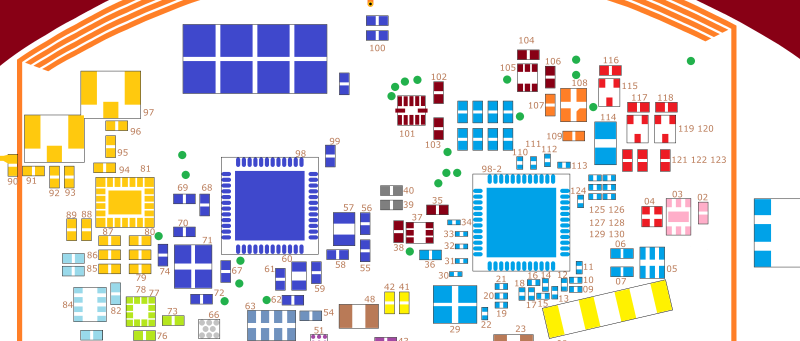Outdoor navigation is a problem that can be considered solved for decades or maybe even centuries, depending on the levels of accuracy, speed and accessibility required. Indoor navigation and location, on the other hand, is a relatively new field and we are still figuring it out. Currently there are at least four competing technologies pushed by different manufacturers. One is ultra wide band radio and [Marco van Nieuwenhoven] shows us what a beacon using this technology is made of.
In his thorough tear down of an Estimote location beacon, he comes up with a complete parts list and schematics for each of the four PCB layers. The beacons are controlled by a Cortex M4 and feature Bluetooth radio in addition to the UWB part. They also come with a three-axis accelerometer, temperature, ambient light and pressure sensors and NFC capability. These boards combine a lot of functionality in a compact package and [Marco]’s stated intent is to create an open source firmware for them.
Hacking proprietary hardware, especially when doing so in public may get you in legal trouble, but in this case [Marco] has contacted the manufacturer, and the relationship seems to be friendly so far. Let’s hope it stays that way; these things look like a promising platform and may become a lower cost alternative to the evaluation kit running the same UWB radio we featured earlier. Alternatively you could ditch the UWB and use WiFi for indoor location.
















$600, about four years ago. One would hope the technology has come down in price.
It has/is doing.
As noted in the second last link of the HAD summary, Decawave are making some interesting products at a competitive price.
Hi,
This is Mickael from Decawave.
The $600 kit was an RF performance evaluation kit selling in few 100s units and not designed to be cost effective.
We just launched a new kit – MDEK1001- with 12 units for $299.
No more RF evaluation capability but more a system experience as those 12 units allow you to deploy a Real Time Location System within 10mn and evaluate the location performance of UWB technology (10/15cm).
We are also working hard to democratize this technology and as mentioned below we also launched a BLE/UWB combo module (with built in accelerometer) so that you can design your own product/application/Proof of Concept quickly. Sells for $25 a unit and less than $12 in 10K quantities.
We are always looking to improve our offer so do not hesitate to share feedback/critics!
Have a nice day.
Mickael.
The whole thing design around 25$ eval module DWM1001 (https://www.decawave.com/sites/default/files/dwm1001_datasheet.pdf)
The estimote doesn’t use the DWM1001 it’s directly using the DW1000 module (which the DWM1001 breaks out). And it has several other useful sensors and bluetooth built in.
hi! “estimote doesn’t use the DWM1001 it’s directly using the DW1000 module (which the DWM1001 breaks out)” does that make a difference to performance?
The University of Washington Bothell has many location beacons.
An a radio amateur, the term “ultra-wideband” makes me cringe.
why does it make you cringe?
Amateur radio often operates at the thermal limit. UWB covers large swaths of spectrum. Put enough UWB emitters in an area and the signals raise the thermal background. Therefore, claims of UWB not interfering are incorrect (they do interfere with licensed operation).